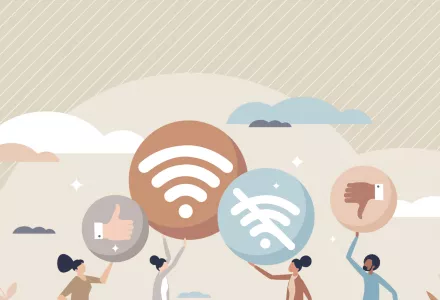
Introduction
History has its eyes on us. Years from now, what was and was not attempted to address the digital divide will not only be remembered but will also be memorialized in code. Americans who perpetually struggle with the ability to get online continually lag behind their connected counterparts in earning power, lifelong learning, healthcare options, and political clout. Meanwhile, those with reliable high-speed internet access, digital dexterity, and ready access to computing devices will continue to produce some of the most influential digital architects of our time as they enjoy unmatched opportunities for well-being, longevity, and wealth.
Digital inequities allow the digital divide to thrive in the most under-resourced communities. Proof of inequity rarely surfaces in isolation and has a compound effect by multiplying the impact of disadvantage. By the time a household is labeled as being on the wrong side of the digital divide, its residents have already missed out on the benefits of a digital economy and experienced socioeconomic consequences that transcend household walls.
In examining the ten highest and lowest median income states, data show that the populations struggling with connectivity are remarkably similar. Poverty tends to be a root problem for households that live in close proximity to digital infrastructure but cannot afford to maintain broadband subscriptions throughout the year. Approximately 50% of Indigenous residents living on tribal lands still do not have baseline broadband access or a computing device at home to get online. Black and Brown households in high- and low-income states consistently trail behind their White counterparts in broadband adoption rates, a statistic made worse by them being twice as likely to have canceled broadband service at home due to the financial strain of the pandemic.
This research was designed to explore three primary questions. First, is there a predominant race and socioeconomic class of the populations most frequently impacted by the digital divide? Second, does the digital divide impose a collective cost that is shared with digitally disadvantaged and connected households? Third, should investing in digital equity be a national priority? The analysis documents why the answer to all three of those questions is a resounding yes.
Even though the recommendations in this report primarily focus on the effect of public policy decisions or inaction coupled with marketplace dynamics, there is an implicit call for both public and private entities to examine how their roles – including strategic silence – have contributed to digital inequality. Public policy changes are only ceremonial without confronting the underbelly of how technology and telecommunications regulations are made. Moreover, permanently eliminating digital divides necessitates deliberate reflection on whose voices and stories actually inform remedies, which can differ from those that policy proposals are purported to help.
Clearly, the consequences of the digital divide go far beyond the estimated nineteen million households that do not have a single household on their census block that can subscribe to broadband service. The economic impact of persistent digital inequities, which also exacerbate other societal inequalities, causes a ripple effect in local and state economies in addition to hobbling domestic productivity and competitiveness. Separate but related, when unequal access to financial resources plays such a central role in building assets and transmitting intergenerational wealth, ensuring that all Americans, particularly those trapped in cycles of poverty, have reliable access to a known economic enabler is essential, especially when it improves agility in a rapidly changing digital economy.
There is a direct correlation between the digital divide and income inequality. For digital citizens – those with ready access to broadband connections, computing devices, digital skills, and the ability to contribute to a digital society – technology accelerates earning power and career opportunities. Both are critical for transforming income into wealth. Conversely, those with marginal to no connectivity have significantly different economic outcomes and frequently rely on manual labor or jobs that pay lower wages.
Benchmarks of connectivity will continue to evolve with innovation. Unless public policy strategies recognize the digital divide as a dynamic, multi-dimensional problem that demands sustainable solutions for access and adoption challenges, it will be impossible to contain the economic fallout. The consequences limit education, economic development, wellness outcomes, government service delivery options, access to emergency services, civic engagement, and more for the digitally disadvantaged. These vulnerabilities warrant thoughtful, long-term interventions that meet the enormity of the problem.
Ochillo, Francella . “The Economic Consequences and Generational Impact of the Digital Divide.” May 17, 2022


